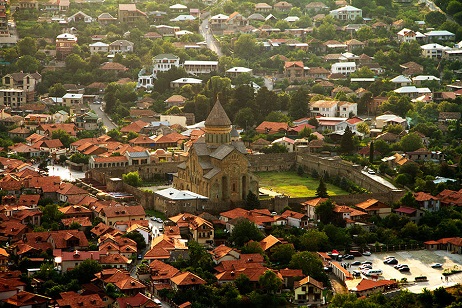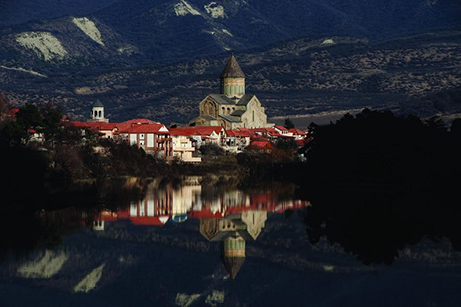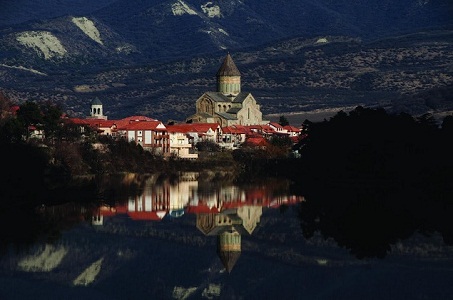Georgia celebrates Svetitskhovloba, day of legendary cathedral

Orthodox Christians in Georgia are today celebrating one of the most significant days in the country’s religious calendar – Mtskhetoba-Svetitskhovloba, a celebration of Georgia’s ancient capital city and its legendary cathedral.
Svetitskhoveli Cathedral, known as the burial site of Christ's mantle, is a Georgian Orthodox cathedral located in the historical town of Mtskheta, 20km northwest of the nation's capital Tbilisi. It is one of the principal worship sites of the Georgian Orthodox faith and the place where many local monarchs have been crowned and laid to rest.

The majority of Georgia’s population is Orthodox Christian so today is a public holiday in the country.
The Catholicos Patriarch of All Georgia Ilia II conducted a festive service at the Cathedral today. People gathered in the Cathedral for collective prayer and to remember the Twelve Apostles. Prime Minister Irakli Garibashvili, as well as other members of the Cabinet, attended the service and walked in Mtskheta streets earlier today.
A large number of guests were expected to visit Mtskheta today so officials closed the streets of the historic town to vehicles. Pedestrian access was permitted. National dances and songs were performed and handmade subjects were presented in the streets all day long. Later in the evening, Mtskheta locals and the town’s guests will be able to enjoy a gala concert in the centre of the town.

Svetitskhoveli has long been the principal Georgian church and remains one of the most venerated places of worship to this day. Svetitskhovloba pays homage to this cathedral, whose name means "Life Giving Pillar”.
The current Cathedral was built in the 11th Century by Georgian architect Arsukisdze, although the site itself was even older and dated back to the early 4th Century and was surrounded by a number of legends associated primarily with early Christian traditions.
It was the second largest church building in the country, after the recently consecrated Tbilisi Holy Trinity Cathedral, and is listed as a UNESCO World Heritage Site along with other historical monuments of Mtskheta.
The original church was built in the 4th Century A.D. during the reign of Mirian III of Kartli (Iberia). Saint Nino, Equal to the Apostles and the Enlightener of Georgia, a woman who preached Christianity in Georgia, was said to have chosen the confluence of the Mtkvari and Aragvi rivers as the place of the first Georgian Church.

According to Georgian hagiography, in the 1st Century A.D. a Georgian Jew from Mtskheta named Elias was in Jerusalem when Jesus was crucified. Elias bought Jesus’ robe from a Roman soldier at Golgotha and brought it back to Georgia. Returning to his native city, he was met by his sister Sidonia who upon touching the robe immediately died from the emotions engendered by the sacred object. The robe could not be removed from her grasp, so she was buried with it.
The place where Sidonia was buried with Christ's robe was preserved in the Cathedral. 
Later, an enormous cedar tree grew from her grave. Saint Nino ordered the tree to be chopped down to build a church and subsequently, seven columns were made from the cedar tree and used for the foundation of the church. The seventh column was believed to hold magical properties and rose by itself into the air. It returned to earth after Saint Nino prayed for a whole night. It was further said that a
sacred liquid flowed from the seventh column which cured people of all diseases.
In Georgian sveti meant "pillar" and tskhoveli meant "life-giving" or "living", hence the name of the Cathedral.
Today, an icon portraying this historic event can be seen on the second column, located on the right-hand side from the entrance of the Cathedral. The image has been reproduced widely throughout Georgia and showed Sidonia with an angel lifting the column to heaven. Saint Nino is in the foreground while King Mirian and his wife Queen Nana were to the right and left.
Georgia officially adopted Christianity as its state religion in 317 A.D.
 Tweet
Tweet  Share
Share

